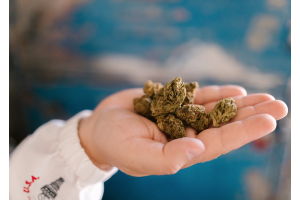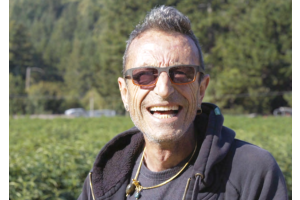A New Hope

Courtesy of the global COVID-19 pandemic, the ever-growing human cost and its impact on the economy (along with our restricted freedoms and the ongoing changes to our everyday lives) the events of the past couple of years are likely to be seen as a key turning point in human history.
Regardless of where you happen to find yourself geographically, it has been a difficult time for us all and while there certainly seems to be some sense of a 'light at the end of the tunnel' when it comes to the gradual decline in overall mortality rates we have to accept that the concept of 'living with COVID' is something we probably have to come to terms with sooner rather than later.
At the end of last year, the number of confirmed cases had exceeded 272 million globally with more than half a million new cases being recorded daily and almost 5.5 million deaths being attributed to COVID-19. Vaccines have been developed around the world and a reasonably-large proportion of the world's population have taken up the offer of a vaccine but mutations of the virus have proven to be problematic in terms of their ability to modify the transmissibility or the severity of the virus.
Researchers around the world are advising people that it is highly unlikely that this virus will ever disappear and instead will eventually will become endemic in the global population and be treated in the same way that we consider seasonal flu. However, there is always the risk of a new mutation causing issues, as we have already seen with the distinctions between the Alpha and Delta variants and the increase in severity, or the Omicron variant with its higher levels of transmission (and lower severity) which means that there is a need for our current response to COVID-19 to constantly adapt to these mutations.
While many nations are heavily-focused on the roll-out of the numerous vaccines that have been developed at phenomenal speeds in response to the spread of the virus and implementing booster schemes in response to new variants, some researchers are looking into ways that we can expand our repertoire of defense beyond regulations pertaining to mask-wearing, social-distancing and a seemingly-endless barrage of needles and swab testing.
Over the past year or so, studies have found links between poor diet and an increased risk of infection along with numerous other possible avenues of exploration that hope to strike a balance between reducing the impact of the virus and impinging on people's lives. Now, a new study, published at the start of the new year, has found that there is a clear link between the application of cannabinoids and a huge reduction in the rate of infection.
In an attempt to break the cycle of the reliance on vaccinations to reduce the transmission of infection in populations, a team of researchers from Oregon State University have been exploring the potential of different compounds to inhibit the spread of COVID-19 and they have found that certain cannabinoids demonstrate a high level of efficacy in preventing cellular infection. Interestingly, the study found that CBGA and CBDA are able to bind to the spike protein on the virus' surface and thereby block the ability of the virus to bind to its host.
Essentially, this means that the virus cannot cause infection and instead will die off within the host without causing harm. While most vaccines are designed to inform the body of COVID-19's profile so that it can develop an effective immune response in preparation for future infections, this study shows that there is potential for regular doses of some cannabinoids to create a naturally-occurring barrier to the virus which may prove to be pivotal in terms of a long-term solution to infection and transmission.
Any time a virus enters the body it needs to find a way to enter our cells so that it can start replicating. The Coronaviridae family (of which SARS-CoV-2 is a member) have a number of steps along the route to effective infection and some of the vaccines try to replicate some of these steps in order for the body to develop a suitable response to its presence.
This particular Coronavirus strain is an 'enveloped, non-segmented, positive sense RNA virus that is characterized by crown-like spikes on the outer surface' and while there are many stages where intervention may be an effective step, the 'binding of the viral spike protein of SARS-CoV-2 to the human cell surface receptor angiotensin converting enzyme-2 (ACE2) is a critical step during the infection of human cells.' What this means is that anything which acts as an inhibitor to this binding process 'could be used to prevent [...] infection as well as shorten the course of COVID-19 infections by preventing virus particles from infecting human cells.'
During a normal course of infection, once the virus has entered the host organism subunits of the SARS-CoV-2 spike protein bind to the ACE2 receptor in order to initiate the actual process of infection. This process allows the virus to fuse with the host cells and pass through the cellular membrane. Previous studies in virology have found that 'Ligands with high affinity to the receptor binding domain on the S1 protein have the potential to function as entry inhibitors and prevent infection of human cells' which has lead to a number of investigations into compounds that may block the interactions between the virus and the receptors in the host.
The research, which was published on the website of the Journal of Natural Products, goes on to confirm that 'natural products are the most successful source of drugs and drug leads in the history of pharmacology' and while it is certainly true that 'combinatorial chemistry currently receives more emphasis for lead discovery by the pharmaceutical industry, nature continues to be a source of unique chemical structure diversity for new drug discovery.' When you consider that the current pharmaceutical industry only really came to fruition over the last century, you realize how short-sighted it is for some people to think that man-made medicines are ever likely to out-perform nature when it comes to fighting disease and creating homeostasis within the human body. Thankfully, science is a very broad field of research and there is a huge wealth of opportunity out there waiting to be discovered. Estimates suggest that 'less than 10% of the world's biodiversity has been evaluated for potential biological activity' meaning that 'many more useful natural lead compounds await discovery.'
When you consider that hemp is becoming increasingly recognized for its myriad properties (or at least re-discovered following the horrendous impact of prohibition) and is now a viable and legal source of CBD in many countries, this research has the potential to have a massive impact on the length and severity of the pandemic. While several cannabinoid ligands were investigated during this study, with cannabidolic acid (CBDA) and cannabigerolic acid (CBGA) being found to have the highest affinity for the spike proteins in question, there is a distinct possibility that this research only scratches the surface of the potential for cannabis to be a turning point in the fight against infection.
From my own experience, I have previously found myself wondering if my daily consumption of cannabis has anything to do with the fact that I am yet to experience any symptoms of COVID-19 regardless of the fact that I interact with large numbers of people and have been in close proximity to the virus at various points. Whether ingestion of high-dose CBD is necessary for this process to be effective or not is something which is still being investigated as there are limits to the scope of this research currently.
In the future it may be possible for extended research to look into the impact of THCA-A on a virus' ability to infect its host but this was not possible to investigate further at this time as 'THCA-A is a controlled substance [and therefore] insufficient quantities were available for determination of binding affinity or antiviral activity.' We can only hope that our governments are really capable of 'following the science', whatever route it may take, so that we can move forward to a much brighter future where cannabis can finally get the recognition it deserves for its almost limitless potential.
Written and Published by PSY-23 in Weed World Magazine Issue 156
Image: Pexels












Validate your login